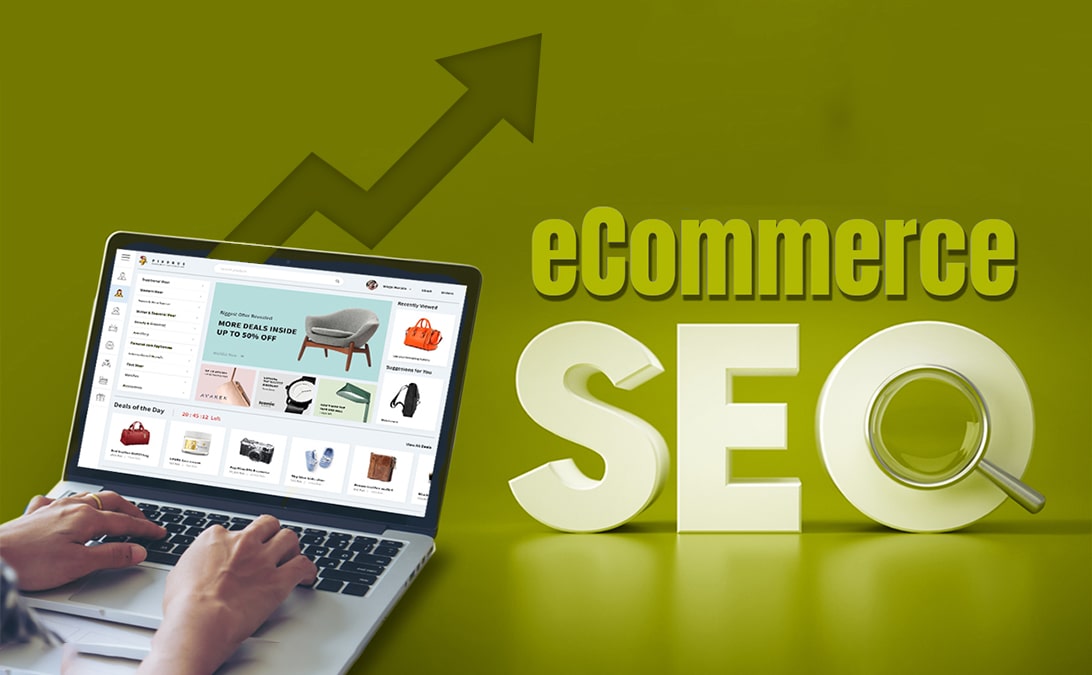SEO is the backbone of any successful online store, driving organic traffic and boosting sales in a crowded digital marketplace. In 2025, with over 24 million e-commerce sites globally, ranking high on search engines like Google is critical to stand out—studies show 75% of users never scroll past the first page of results. Effective SEO increases visibility, improves user experience, and converts clicks into customers. This blog dives into the must-check SEO elements for online stores, from technical fixes to content strategies, to help you dominate search rankings.

Whether you’re running a small shop or a large e-commerce platform, neglecting SEO can tank your traffic and revenue. According to a 2024 report, 68% of online experiences begin with a search engine, and e-commerce stores with strong SEO see up to 40% higher conversion rates. This guide breaks down the most important SEO areas—technical, on-page, content, off-page, and analytics—so you can audit and optimize your store. Let’s get started with practical steps to make your online store a search engine favorite.
Technical SEO for Online Stores
Technical SEO ensures your online store is easy for search engines to crawl and index, laying the foundation for better rankings. A poorly optimized site can frustrate users and hurt your visibility, especially since Google prioritizes fast, accessible websites. From speed to sitemaps, getting these basics right is non-negotiable for e-commerce success. Here’s what to focus on to keep your store technically sound.
Website Speed and Performance
Page load speed directly impacts user satisfaction and search engine rankings, as slow sites drive customers away. Google’s Core Web Vitals emphasize speed, with a 1-second delay potentially reducing conversions by 7%. Fast-loading pages keep users engaged and signal quality to search engines. Optimizing speed is a quick win for any online store.
- Optimize images: Compress files using tools like TinyPNG to reduce load times.
- Enable browser caching: Store static files to speed up repeat visits.
- Use a Content Delivery Network (CDN): Deliver content faster via global servers.
- Minimize JavaScript and CSS: Reduce heavy code to streamline page rendering.
To measure speed, tools like Google PageSpeed Insights and GTmetrix are essential for identifying bottlenecks. PageSpeed Insights provides a score out of 100 and specific fixes, like reducing server response time, based on Google’s metrics. It’s free, user-friendly, and highlights mobile and desktop performance separately. Run tests regularly to catch issues early and keep your store competitive.

GTmetrix offers deeper insights, showing waterfall charts of how each element loads. It grades your site on speed and structure, with actionable tips like optimizing images or deferring non-critical scripts. A 2024 study found that sites scoring above 90 on GTmetrix saw 20% more organic traffic. Use it alongside PageSpeed for a complete picture of your site’s performance.
Crawlability and Indexability
Search engines must crawl and index your site to rank it, but issues like broken links or misconfigured settings can block them. Crawlability ensures Googlebot can navigate your store, while indexability confirms your pages appear in search results. Problems here can hide your products from potential customers. Fixing these issues is critical to maximize your store’s visibility.
Broken links, improper robots.txt files, or noindex tags can stop search engines in their tracks. For example, a misconfigured robots.txt might accidentally block product pages, costing you traffic. Tools like Google Search Console and Screaming Frog help spot and fix these issues quickly. Regular audits keep your site accessible to crawlers and users alike.
- Check for broken links: Use Screaming Frog to find 404 errors and fix them.
- Review robots.txt: Ensure it allows crawling of key pages like products and categories.
- Remove noindex tags: Verify no critical pages are blocked from indexing.
- Monitor crawl errors: Use Google Search Console to identify and resolve issues.
XML Sitemap and Robots.txt
An XML sitemap guides search engines to your product pages, ensuring they’re indexed efficiently. A well-optimized robots.txt file tells crawlers which pages to prioritize and which to skip. Both are crucial for e-commerce stores with hundreds or thousands of product pages. Without them, search engines may miss key content, hurting your rankings.
Submit your XML sitemap to Google Search Console to help crawlers find new or updated pages quickly. In robots.txt, avoid blocking essential areas like product categories while excluding irrelevant pages like admin panels. Regularly update your sitemap as you add products or categories. These steps ensure search engines understand your store’s structure and prioritize high-value pages.
On-Page SEO Essentials
On-page SEO focuses on optimizing individual pages to rank higher and drive relevant traffic. It’s about making your product and category pages search-engine-friendly while appealing to customers. From keywords to meta tags, these elements directly influence how your store appears in search results. Let’s break down the key areas to check.
Keyword Research and Targeting
Finding high-intent keywords, like “buy running shoes online,” is the cornerstone of e-commerce SEO. These phrases attract customers ready to purchase, not just browse. Proper keyword research aligns your store with what shoppers are searching for. It’s the first step to driving targeted traffic and boosting sales.
Keyword research for online stores isn’t just about finding popular terms—it’s about uncovering what your customers type when they’re ready to buy. In 2025, e-commerce sites targeting high-intent keywords saw 30% higher conversion rates than those using generic terms. Focus on long-tail keywords, like “women’s vegan leather handbags,” which are specific and less competitive, driving 70% of organic search traffic, per recent studies. Regularly update your keyword strategy to match seasonal trends, like “winter running gear” in colder months, to stay relevant.

Start by brainstorming terms your target audience uses, then validate them with data-driven tools. Analyze competitors to spot keywords they rank for that you might be missing—top stores often dominate for niche phrases you can target too. Prioritize search intent, focusing on keywords with “buy,” “best,” or “near me” to capture shoppers ready to act. A consistent keyword refresh every quarter keeps your store aligned with evolving search patterns and boosts rankings.
- Target long-tail keywords: Focus on specific phrases like “men’s waterproof hiking boots.”
- Analyze competitors: See which keywords top stores rank for.
- Use search intent: Prioritize keywords showing purchase intent (e.g., “best,” “buy”).
- Update regularly: Refresh keyword lists to match trends and seasons.
Optimized Product Pages
Product pages are your store’s sales engine, and optimizing them can lift rankings and conversions—studies show well-optimized pages increase sales by up to 30%. SEO-friendly titles and descriptions attract clicks while keeping search engines happy. Use unique content and structured data to stand out in search results.
- Write unique product descriptions: Avoid manufacturer copy to prevent duplicate content.
- Include target keywords: Place them naturally in titles, descriptions, and headers.
- Add structured data: Use schema markup for rich snippets like price and ratings.
- Optimize for conversions: Include clear CTAs and high-quality images.
Meta Tags and URLs
Meta titles and descriptions are your store’s first impression in search results, directly impacting click-through rates, while clean URLs help search engines and users navigate your site. Poorly crafted meta tags or cluttered URLs can tank rankings and confuse potential customers. Optimizing these elements ensures your product and category pages are both clickable and crawlable. A 2025 study found that well-optimized meta descriptions can boost click-through rates by up to 25%, making them a critical focus for e-commerce SEO.
Meta titles should be 50-60 characters long to avoid truncation in search results, balancing keywords with compelling language. Meta descriptions, ideally 120-160 characters, need to summarize the page’s value while including a call-to-action, like “Shop now for free shipping.” Including your brand name in meta titles can build recognition, especially for established stores, but avoid it if it pushes you over the character limit or dilutes keyword focus. URLs should be short, descriptive, and keyword-rich—think “/mens-running-shoes” instead of “/prod123?cat=shoes”—as clean URLs improve crawlability and user trust.
| Element | Good Example | Bad Example | Why It Matters |
|---|---|---|---|
| Meta Title | Men’s Running Shoes - Fast Delivery | BrandX | Running Shoes for Men - Best Deals Online | Clear, keyword-rich, under 60 characters; bad example is vague and too long. |
| Meta Description | Discover durable men’s running shoes with free shipping. Shop now! | Buy shoes online, great prices, lots of styles, fast delivery, top quality. | Concise, actionable, under 160 characters; bad example is stuffed and unclear. |
| URL | /mens-running-shoes-waterproof | /product?id=12345&cat=shoes | Descriptive, short, keyword-focused; bad example is messy and hard to read. |
| Category Page Title | Women’s Dresses - Summer Collection | BrandX | Shop Our Dresses Online Now | Targets specific keywords, includes brand; bad example lacks focus. |
| Product URL | /womens-summer-floral-dress | /item?sku=9876&dept=apparel | Clear and relevant; bad example uses parameters that confuse crawlers. |
Schema Markup for Rich Snippets
Structured data, like schema markup, lets search engines display rich snippets—such as star ratings, product prices, or availability—right in search results. These enhanced listings grab attention, boosting click-through rates by 20-30%, according to 2025 studies, and make your products stand out in a crowded e-commerce landscape. For online stores, schema markup is a game-changer, signaling to Google exactly what your page is about, from product details to reviews. Implementing it correctly can drive more clicks and conversions without extra ad spend.
To get started, use tools like Google’s Structured Data Markup Helper to generate code for product pages, ensuring details like price or stock status appear in results. Schema.org offers templates for various markup types, like Product or Review, to fit your store’s needs. Test your markup with Google’s Rich Results Test to avoid errors that could block snippets. Regularly update schema as you add new products to keep your listings fresh and visible.
- Use Product schema: Include name, price, availability, and SKU for clear product details.
- Add Review schema: Display star ratings and review counts to build trust.
- Test your markup: Run Google’s Rich Results Test to ensure snippets display correctly.
- Monitor performance: Track click-through rates in Google Search Console to measure impact.
Internal Linking Structure
Internal links connect your store’s pages, guiding users to relevant products while helping search engines understand your site’s structure. A 2025 study showed that e-commerce sites with strategic internal linking increased organic traffic by 18% and improved time-on-site by 12%. They distribute page authority, making high-value pages like bestsellers or categories rank higher. Done right, internal links boost SEO and turn browsers into buyers.

Use descriptive anchor text, like “women’s leather jackets,” to link product pages to related categories or collections, avoiding vague terms like “click here.” Overlinking can overwhelm users and dilute authority, so aim for 3-5 relevant links per page. Plan your structure to prioritize key pages, such as seasonal collections or top-performing products. Regular audits with tools like Screaming Frog ensure broken or outdated links don’t harm your SEO.
- Use descriptive anchor text: Link with specific phrases like “men’s running shoes” for clarity.
- Limit link volume: Keep to 3-5 internal links per page to avoid dilution.
- Prioritize high-value pages: Link to bestsellers or seasonal collections to boost authority.
- Audit monthly: Use Screaming Frog to check for broken or irrelevant links.
Content Strategy for E-Commerce
Category Page Optimization
Category pages are SEO goldmines, driving traffic to multiple products at once. Well-optimized pages rank for broad keywords and guide users to specific items. A 2025 study showed category pages account for 40% of e-commerce organic traffic.
- Write unique descriptions: Include keywords and avoid generic copy.
- Add value: Include FAQs or buying guides to engage users.
- Optimize images: Use alt text and compress for speed.
- Link to products: Connect to top-selling or featured items.
Blog Content for Organic Traffic
Blog posts drive organic traffic by targeting informational keywords, like “how to choose running shoes,” attracting users early in their buying journey. In 2025, e-commerce sites with active blogs saw 55% more visitors and 3.5x higher traffic for weekly posters, per industry data. Blogs build trust, answer customer questions, and naturally link to product pages, nudging readers toward purchases. A strategic blog plan turns curious visitors into loyal customers.
Create content like buying guides, how-tos, or product comparisons to match user intent, and use topic clusters to boost SEO. A topic cluster links a pillar page (e.g., “Guide to Running Gear”) to related posts (e.g., “Best Trail Shoes for 2025”), signaling expertise to search engines. Link blogs to product or category pages to drive conversions, and update older posts to maintain rankings. Consistency—posting at least biweekly—and clustering around core topics can double your organic reach over time.
- Write for intent: Create guides or comparisons targeting “how to” or “best” searches.
- Use topic clusters: Build pillar pages with linked subtopics to boost authority.
- Link to products: Connect blog content to relevant product or category pages.
- Refresh old posts: Update outdated content to maintain rankings and relevance.
User-Generated Content (UGC)
Customer reviews and ratings enhance SEO by adding fresh, unique content to product pages. Pages with reviews rank 12% better on average, per 2025 studies. Encouraging UGC builds trust and signals relevance to search engines. It’s a simple way to boost rankings and conversions.

Prompt customers to leave reviews via post-purchase emails or incentives like discounts. Use schema markup to display star ratings in search results, increasing click-through rates. Respond to reviews to show engagement and improve user experience. UGC not only helps SEO but also drives sales by influencing buyer decisions.
- Send review requests: Email customers 1-2 weeks after purchase.
- Offer incentives: Provide small discounts for honest feedback.
- Use schema markup: Enable star ratings in search results.
- Moderate content: Ensure reviews are relevant and spam-free.
Avoiding Duplicate Content
Duplicate content, like identical product descriptions across variants, confuses search engines and hurts rankings. Google may penalize or deindex duplicated pages, reducing your visibility. Tools like Copyscape or Siteliner can spot issues across your store. Fixing duplicates ensures every page has a chance to rank.
Use canonical tags to point search engines to the primary version of a page, especially for similar products. Write unique descriptions for each variant, even if they differ slightly, like color or size. Regularly audit your site to catch accidental duplicates from imports or CMS errors. These steps keep your store’s SEO clean and effective.
- Use canonical tags: Point search engines to the primary page version.
- Write unique descriptions: Create distinct content for each product variant.
- Audit regularly: Use Copyscape or Siteliner to identify duplicates.
Off-Page SEO Strategies
Building High-Quality Backlinks
Backlinks from reputable sites signal authority to search engines, boosting your store’s rankings. A 2025 study found sites with strong backlink profiles ranked 20% higher on average. Quality matters more than quantity—focus on relevant, trustworthy sources. Building backlinks is a long-term strategy for e-commerce success.
- Guest posting: Write for industry blogs and link to your store.
- Influencer collaborations: Partner with bloggers or YouTubers for product mentions.
- Supplier links: Ask suppliers to link to your product pages.
- Create shareable content: Infographics or guides that attract natural links.
Social Media Signals
Social shares don’t directly boost SEO but amplify your content’s reach, driving traffic and earning potential backlinks that support rankings. In 2025, 65% of e-commerce traffic came from social media referrals, with platforms like Instagram and Pinterest excelling at visual product promotion. Engaging posts increase brand visibility, encourage sharing, and funnel users to your store. A strong social presence indirectly strengthens your SEO by expanding your audience and link opportunities.
| Platform | Best Use | SEO Benefit |
|---|---|---|
| Shoppable posts, Stories | Drives traffic via product tags | |
| Product pins, idea boards | Boosts discoverability for visual searches | |
| TikTok | Short product demos, trends | Engages younger audiences, drives clicks |
| Ads, product catalogs | Targets broad demographics with shop links | |
| YouTube | Tutorials, product reviews | Ranks videos in search, links to store |
Local SEO for Physical Stores
If your online store has a physical location, local SEO targets “near me” searches, which grew 30% in 2025. Optimizing for local keywords drives foot traffic and online sales. A Google Business Profile is essential for appearing in local search results. It’s a must for hybrid e-commerce businesses.
- Set up Google Business Profile: Claim and verify your listing with accurate details.
- Optimize for local keywords: Use terms like “[city] + [product]” in content.
- Add a store locator page: Include address, hours, and a map on your site.
- Encourage local reviews: Ask customers to review on Google to boost credibility.
Monitoring and Analytics
Tracking SEO Performance
Monitoring SEO metrics like organic traffic, keyword rankings, and conversion rates shows what’s working and what isn’t. In 2025, stores tracking SEO saw 25% better performance than those that didn’t. Tools like Google Analytics 4 and SEMrush provide clear insights. Regular tracking keeps your strategy on point.
- Track organic traffic: Monitor sessions from search engines in Google Analytics.
- Check keyword rankings: Use SEMrush to see position changes over time.
- Measure conversions: Set up goals for add-to-cart or purchase events.
- Analyze bounce rates: High rates may signal UX or content issues.
Fixing Technical Issues
Regular audits catch technical issues like broken links, 404 errors, and redirects that harm SEO and frustrate users. A 2025 study found these issues can drop rankings by 10-15% and reduce conversions by up to 12%. Schedule monthly checks with tools like Google Search Console or Ahrefs to keep your store running smoothly. Addressing these problems promptly ensures a seamless experience and maintains search visibility.
Broken Links
Broken links disrupt user navigation and stop search engines from crawling effectively. They increase bounce rates and can lower site authority, hurting rankings. Use Screaming Frog to identify broken links, then fix them by updating URLs or redirecting to relevant pages. Monthly checks of internal and external links prevent ongoing issues.
404 Errors
404 errors occur when pages are missing, confusing users and crawlers while reducing conversions by 5-10%. They signal poor site maintenance to search engines, impacting rankings. Use Google Search Console to find 404s and set up 301 redirects to similar products or categories. Regular audits catch new errors before they pile up.
Redirects
Improper redirects, like broken 301s or redirect chains, slow your site and dilute SEO value. They confuse search engines and disrupt user flow, increasing bounce rates. Check redirects with Ahrefs or Screaming Frog, ensuring they point to relevant pages. Fix loops or chains monthly to maintain a smooth experience.
Duplicate Content Issues
Duplicate content, like identical product descriptions across variants, confuses search engines and risks penalties. It can deindex pages or lower rankings, per 2025 SEO reports. Use Siteliner or Copyscape to detect duplicates, then apply canonical tags or rewrite content. Audit regularly to catch issues from product imports or CMS errors.
Core Web Vitals Failures
Core Web Vitals (LCP, FID, CLS) measure loading speed, interactivity, and visual stability, directly impacting rankings. Poor scores can drop your site’s visibility by 10%, per 2025 data. Use Google PageSpeed Insights to identify issues like slow LCP or high CLS, then optimize images, reduce JavaScript, or improve server response times. Check monthly to meet Google’s standards.
Competitor Analysis and Google SEO Updates
Keeping tabs on competitors’ keywords, backlinks, and content reveals gaps in your strategy. Staying updated on Google’s algorithm changes, like the 2024 Core Update, ensures your store adapts quickly. In 2025, 70% of top-ranking e-commerce sites actively monitored competitors. This practice keeps you ahead in a competitive market.
- Analyze competitor keywords: Use SEMrush to find high-ranking terms.
- Check backlinks: Ahrefs shows where competitors get their links.
- Study content: Identify gaps in their blog or product page strategies.
- Follow Google updates: Monitor Search Engine Land for algorithm news.
Wrapping Up Your E-Commerce SEO Journey
Getting your online store to rank high in 2025’s crowded e-commerce landscape requires a sharp focus on SEO fundamentals. Technical tweaks like speeding up your site and ensuring crawlability lay the groundwork for visibility, while on-page tactics like keyword-rich product pages and meta tags drive clicks. Content strategies, from blogs to user reviews, build trust and funnel traffic to your products. By tackling these key areas, you can turn casual browsers into loyal customers and boost your store’s bottom line.
Don’t let the scope of SEO overwhelm you—start small and track your progress. A 2024 study showed that e-commerce sites optimizing just three SEO elements saw a 20% traffic increase within six months. Use tools like Google Search Console or Ahrefs to monitor metrics like organic traffic and keyword rankings. Consistent effort, like monthly audits or weekly blog posts, keeps your store ahead of competitors and aligned with Google’s latest updates.
- Prioritize quick wins: Optimize site speed or add schema markup for instant impact.
- Track performance: Use Google Analytics to measure traffic and conversion gains.
- Stay consistent: Schedule monthly audits to catch issues like broken links or duplicates.
- Update content: Refresh blogs and product pages to match seasonal trends or new keywords.



